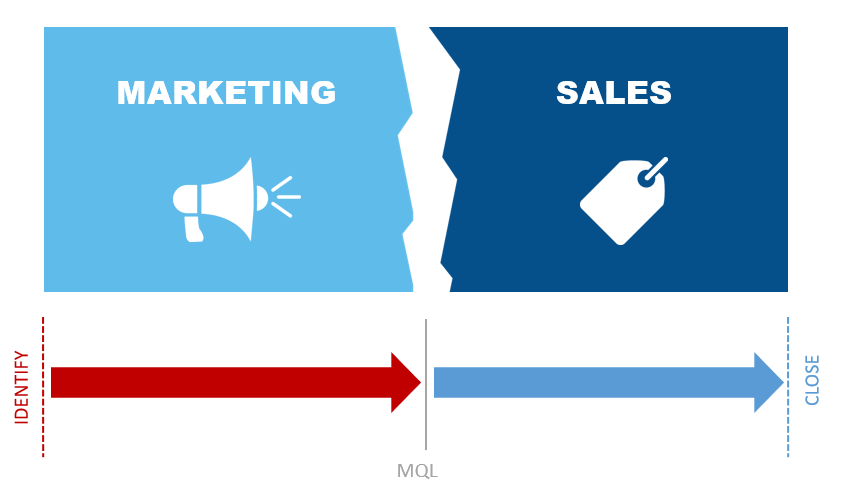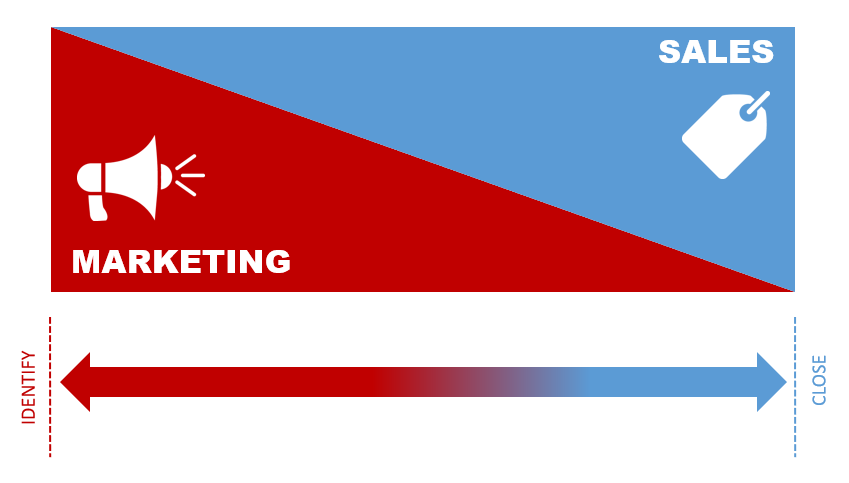Sales and Marketing: Fuel for the Revenue Funnel

As marketing organizations grapple with revenue-accountability and as organizations develop their growth and investment plans, alignment between marketing and sales partners becomes vital. To transform prospects into diligent consumers takes quite the streamlined marketing and sales funnel. Indeed, numerous studies have shown the positive impact of marketing and sales alignment — from higher customer retention rates to higher sales win rates, to closing bigger deals. Aberdeen has found companies with strong marketing and sales alignment achieve a 20% annual growth rate.
Alas, only 8% of companies attest to having strong alignment between their marketing and sales organizations — proving marketing and sales alignment is easier said than done.
This article originally appeared on heinzmarketing.com. Shared with permission.
Despite genuine efforts to align functions, tightly communicate and coordinate processes, sales and marketing teams often find themselves at loggerheads, sometimes as rivals but mostly as convenient scapegoats for missed targets. Why is this?
The Broken Marketing and Sales Funnel

Marketing and sales alignment has to go beyond functional divisions, communications and process coordination. Alignment efforts need to start at the core of how the business sells. This is often reflected by the organization’s marketing and sales funnel. Pipedrive has a simple definition of a sales funnel: a visual representation of the journey from your prospect’s first contact with you until a completed purchase. A marketing and sales funnel will typically define each stage by describing actions the prospect must take in order to progress to the next stage. It is essentially a road map for marketing and sales activities and it helps management forecast sales and plan for capacity.
Unfortunately, for most companies, the revenue funnel’s chief function is to stake out territory. The top part of the funnel is marketing’s territory and sales better keep out! While the bottom of the funnel is sales’ territory and marketing has no business there. As a result, marketing works really hard at filling their MAP with leads in order to have a better chance of nurturing them into “qualified” leads which they then throw across the chasm to sales. Sales may not be there to catch these leads because they are either too busy developing their own leads or don’t agree with the quality level of marketing leads.
This philosophy can run deep, breaking the marketing and sales funnel, and unfortunately becoming part of a company’s culture, which makes implementing change very challenging.
Aligning Marketing and Sales with the Revenue Funnel
Alignment of marketing and sales starts by dismantling the traditional funnel and instead adopting a more integrated funnel. The ideal sales and marketing funnel is really a revenue funnel in which both sales and marketing teams are accountable, in varying degrees, at each stage of the funnel.

Top-Funnel Approach
At the top of the funnel, sales and marketing jointly define the ideal customer profile and work together to refine their target list. They also work closely to understand the members of the buying committee and define the buyer’s journey. By building the buyer’s journey together, there is a common understanding of the foundational elements that drive purchase behavior.
Using the buyer’s journey as the revenue road map ensures that marketing and sales tactics are aligned. Here, marketing may take the lead at developing awareness for sales outreach with offers and messaging that build context for sales. This makes the transition to sales seamless for the buyer.
Mid-Funnel Approach
In the middle of the sales and marketing funnel, when buyers are beginning to understand their own needs and potential solutions, strategies should be closely choreographed between marketing and sales. Marketing may employ an educational nurture strategy while sales provides more hands-on ways to engage and learn more.
Bottom-Funnel Approach
At the bottom of the funnel, sales takes the lead with marketing support. For named accounts, this could mean providing highly customized content and individual references that confirm your solution is the right solution.
It’s natural for there to be a little conflict between marketing and sales. Each team comes to the table with different skill sets and they are both trying to solve the same problem. With sales and marketing using the same revenue funnel, the processes involved are so closely linked the two departments should operate in tandem. These departments directly impact the organization’s ability to thrive. Binding them as interdependent components of a single strategy is your blueprint for growth.
Are your sales and marketing teams struggling to work together? Here are some questions to ask yourself:
- How closely does your current marketing and sales process reflect the buyer’s journey?
- Are your marketing and sales processes documented?
- When was the last time you reviewed your process documentation with the other team?
- Do your sales and marketing teams share an overarching strategy that aligns their respective goals?
If your answers suggest a systemic conflict between the two teams, then it’s high time to rethink your approach. The sooner a broken marketing and sales funnel is nipped in the bud, the sooner your business will reach greater successes.